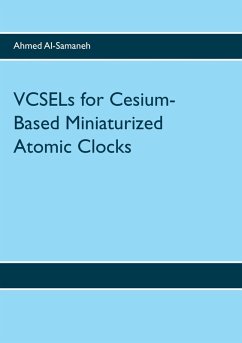Frequency standards or clocks provide time references for a wide range of applications such as synchronization of communication networks, remote sensing and global positioning. Over the last couple of decades, demands on the data rates of many communication systems have substantially increased, imposing more restricted requirements on the stability of their timing devices. At the same time applications have become more mobile, increasing the demand for small and low-power clocks. Atomic clocks have provided the most stable frequency references for more than 50 years. However, the size and power requirements of microwave-cavity-based atomic clocks prohibit them from being portable and battery-operated. Hence, research on miniaturized atomic clocks (MACs) has been initiated by various research groups. A European research project on MACs, funded by the European commission started in 2008. This dissertation reports on the achievements within the European research project in the development of suitable lasers for such atomic clocks. Vertical-cavity surface-emitting lasers (VCSELs) are compelling light sources for MACs because of their low power consumption, high modulation bandwidth, and favorable beam characteristics. VCSELs must feature polarization-stable single-mode emission. Additionally, they must provide narrow linewidth emission at a center wavelength of about 894.6nm and be well suited for harmonic modulation at about 4.6GHz in order to employ coherent population trapping effect at the cesium D1 line. The polarization orientation of the emitted light of a standard VCSEL is a priori unknown. Polarization control is achieved by etching a shallow surface grating in the top Bragg mirror. For the purpose of integration with the clock microsystem, flip-chip-bondable VCSEL designs are realized. Such designs facilitate a straightforward mounting and make the electrical contacts high-frequency compatible.
Dieser Download kann aus rechtlichen Gründen nur mit Rechnungsadresse in A, B, BG, CY, CZ, D, DK, EW, E, FIN, F, GR, H, IRL, I, LT, L, LR, M, NL, PL, P, R, S, SLO, SK ausgeliefert werden.









